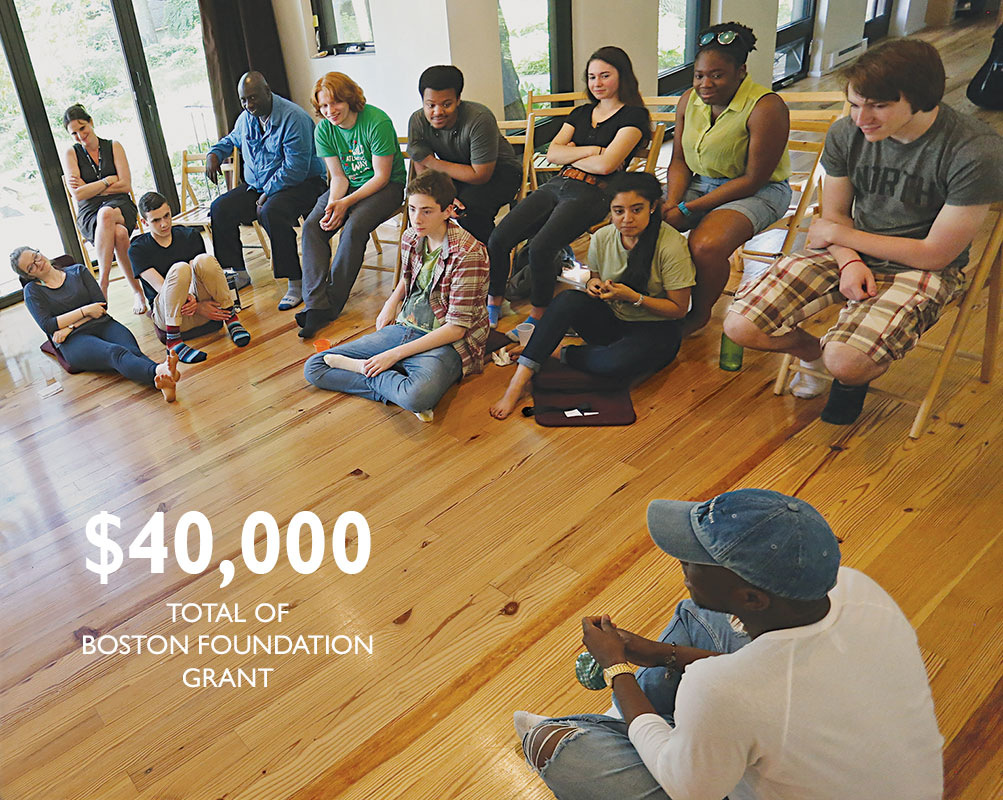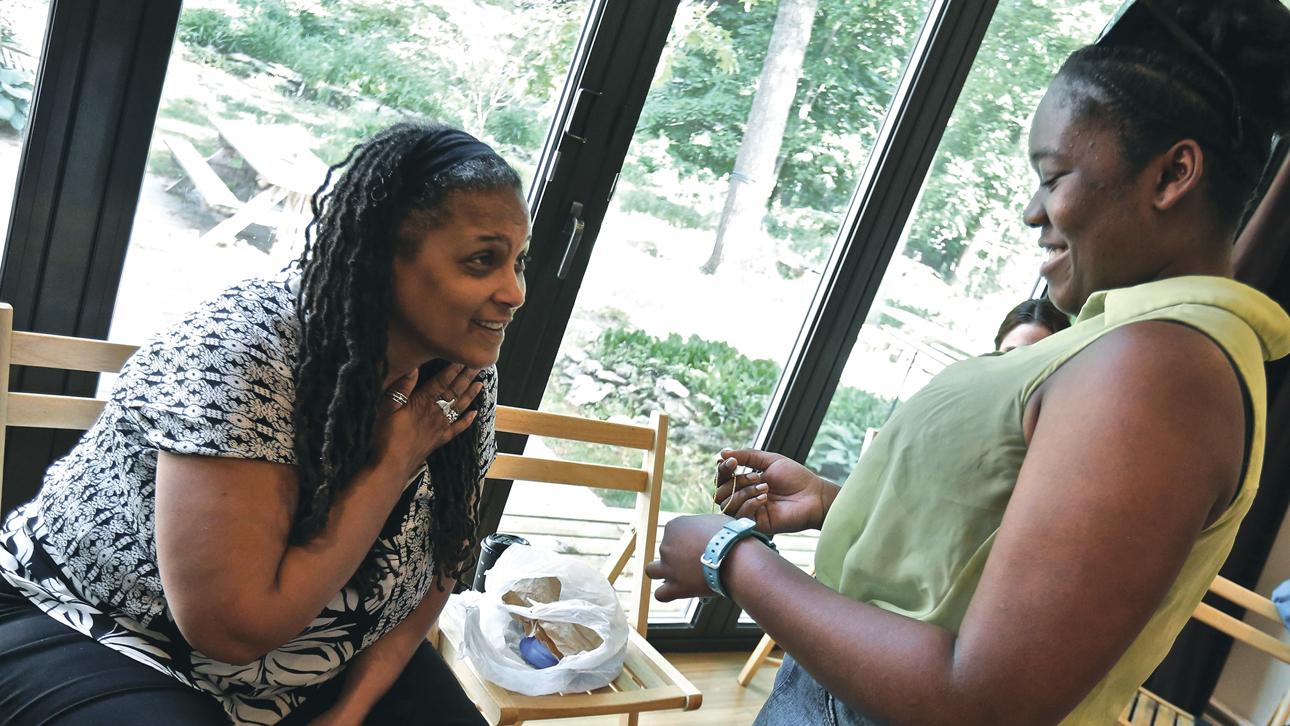How a Community Health Center Became a Racial Justice Organization
TBF News Summer 2018
A small community health center in Jamaica Plain has been taking on one of the most painful and complex issues we face as a city—racial reconciliation and healing—and they are doing it with a diverse group of courageous young people.
Thomas Kieffer, Director of Southern Jamaica Plain Health Center, explains how they found their way to this work, which he describes as a “journey.” They began by asking questions.
“Only about 15 percent of a person’s lifetime health is dictated by their medical care,” he says, “so what about the other 85 percent? And what is our role as a health center in thinking about that?” The questions quickly expanded to an analysis of the community’s inequities in the social determinants of health, such as housing, employment, safety and food. They found that structural racism was at the bottom of every one of them.
“It has been called a ‘system of advantage based on race,’” explains Dennie Butler-MacKay, the Center’s Clinical Social Worker. “It’s not interpersonal. It’s not even institutional. It’s the connection between systems over time that have formed the basis of racism.”
The health center’s leadership concluded that racism was an issue they had to take on as an organization. Under the direction of Butler-MacKay and Abigail Ortiz, Director of Community Health Programs, they brought together a group of young people—half white and half youth of color—to engage in work that is focused on public health equity, but also embraces what Butler-MacKay calls “the heart.”
“It can’t just be an academic exercise,” she says. “It has to include the heart. That’s the element that has made this project work. What we found was that, in true adolescent form, these youth were thirsty for this. We are asking them to unpack some things that can be very painful, but they were eager to do it.”
The young people meet twice a week over the course of a school year. “On Mondays, we work on learning how to use racial justice language and apply it to public health,” says Ortiz. “Wednesdays are when we do what we call ‘higher risk’ activities. We take each other on, but we also do healing circles. If a young person is struggling, we gather around them and help them work it out.”
After about six months, the participants agreed to allow some of their sessions to be recorded, resulting in a remarkably moving and provocative short video.
In one scene, a white teenager named Nathan walks down Center Street, which runs like a spine through Jamaica Plain. He’s wearing a t-shirt that reads “Ask me about structural racism,” as he points out the contrasts he sees in the neighborhood. He passes an espresso coffee house and an antique store, pointing out that he’s now in the mostly white part of the community, one characterized by large Victorians with trimmed yards and fresh paint. Then he turns a corner and gestures toward the differences that are obvious when you move into the part of the community that is inhabited primarily by people of color. Houses are packed much more tightly together and not as perfectly groomed. Bodegas replace upscale shops.
In a session with the other youth, he says, “This project really prepares you to go out and do the work with other white people. You learn so much about yourself. It’s liberating.” His reaction is echoed by a young African-American participant named Delvin: “It’s the only time I’ve had the chance to talk about race. We’re learning about how deep these issues go, how far back they go.”
A young white girl named Mara says the work “has totally changed the way I look at the world.”
A Latino participant, Aneudis, understands now why people cross the street when he’s walking toward them, as if he’s going to hurt them. “You understand why the woman in the store talks to your mother the way she does. You understand the ‘why’ behind so many things.”
The ultimate goal of the project is to groom these young people to be lifelong racial justice proponents. The jury is still out on that, but there is little doubt that they will enter adulthood with eyes wide open about the inequities in our society and the reasons for them—and they won’t hesitate to point them out to others.
“Our philosophy starts with the understanding that everybody deserves to have a healthy life,” says the Center’s Medical Director Juan Jaime De Zengotita. “The challenges our patients face are varied and we will never have fair, equitable and safe health care without the understanding that racism is a factor that is driving against our goals. We now consider ourselves more than a health center; we are a racial justice organization.”


